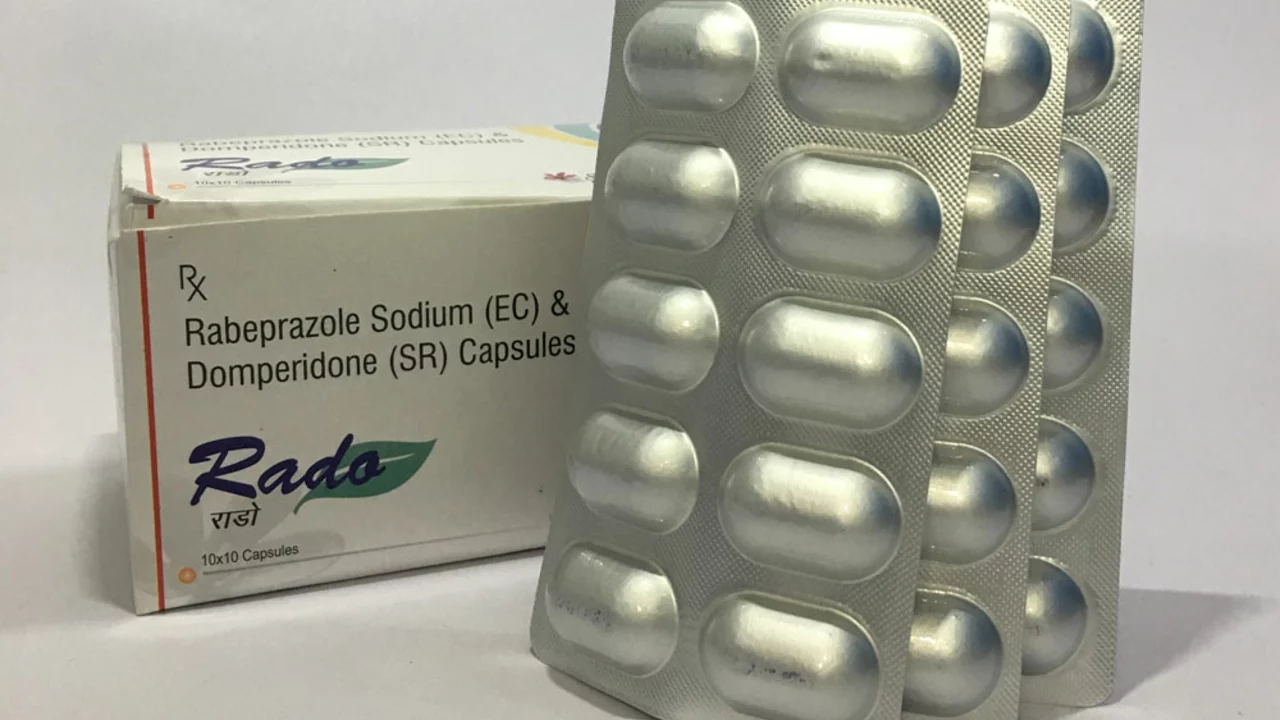Rabeprazole Sodium: Fast Facts and How to Use It Safely
One pill a day can change life for people with constant heartburn. Rabeprazole sodium is a proton pump inhibitor (PPI) that lowers stomach acid and gives faster relief than older antacids. If you deal with reflux, peptic ulcers, or Zollinger–Ellison syndrome, this drug is often on the shortlist.
How rabeprazole works and when to take it
Rabeprazole blocks the final step of acid production in stomach cells, so acid levels drop for 24 hours or more. Doctors usually prescribe 10–20 mg once daily for GERD or ulcers. For severe conditions, higher doses or twice-daily schedules can be used under supervision. Take it before a meal for best results — many people take it in the morning 30–60 minutes before breakfast.
This medicine isn’t a fast-acting antacid. Expect symptom improvement in a few days, with full benefit in 1–4 weeks for healing. If you still have frequent heartburn after 4–8 weeks, talk to your healthcare provider — dosage adjustments or testing might be needed.
Safety, side effects and practical tips
Most people tolerate rabeprazole well. Common side effects are headache, nausea, diarrhea, and stomach pain. Long-term use of any PPI can increase risks like low magnesium, vitamin B12 deficiency, bone fractures, and gut infections. These risks are more likely with high doses or many months of use.
Do these simple things: use the lowest effective dose, review need for continued therapy every few months, and ask your doctor about routine blood tests if you’ve been on a PPI long-term. If you have sudden severe diarrhea, persistent vomiting, or new muscle cramps, contact your clinician — these can signal complications.
Drug interactions matter. Rabeprazole can change how other medicines work — for example, it may affect some antifungals, antivirals, and certain heart drugs. Tell your doctor or pharmacist about all prescription meds, OTC drugs, and supplements you take. If you use clopidogrel or some HIV meds, check with your prescriber before starting a PPI.
If you’re pregnant or breastfeeding, talk to your provider. Rabeprazole is sometimes used when benefits outweigh risks, but your doctor will choose the safest option for you.
Want to avoid long-term PPI use? Try lifestyle steps: lose excess weight, avoid late meals, cut alcohol and tobacco, and skip trigger foods (spicy, fatty, or acidic meals). For occasional heartburn, antacids or H2 blockers may be enough without starting chronic therapy.
On Top-Meds.org we link to detailed articles about related meds, online pharmacies, and safety tips. If you’re thinking of buying rabeprazole online, make sure the pharmacy is reputable and requires a prescription when needed. When in doubt, ask a pharmacist or your healthcare provider — better safe than sorry.

The Long-Term Effects of Rabeprazole Sodium on Your Health
In my research on Rabeprazole Sodium, it's clear that long-term use can have several impacts on our health. For instance, consistent use may lead to vitamin B12 deficiency, as the medication interferes with its absorption. It can also increase the risk of bone fractures, particularly in the hip, wrist, and spine. There's also a risk of developing kidney problems and stomach infections. It's crucial to consult with your healthcare provider to weigh these potential risks against the benefits.
